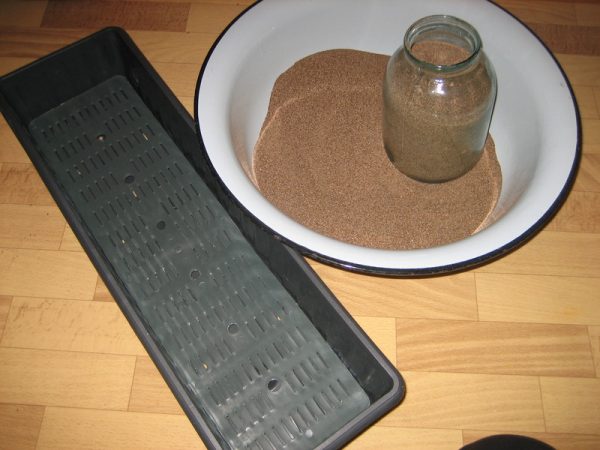Sand as fertilizer: how to use and in what mixtures
Content
Useful properties of sand
The presence of the sandy component in the soil improves its characteristics due to the following properties:
- Drainage. Sand is often added to clay and loamy soils, which are characterized by a very heavy dense structure, low moisture and air permeability. As a fertilizer in such a soil, it provides good drainage, makes the structure looser and suitable for plant growth.
- The ability to accumulate and retain heat for a long time. Soil with sand as fertilizer warms up earlier in spring, cools longer at night. Thanks to the warmth, plants grow faster in it and can be planted earlier than on other types of soil.
- In the soil with sand fertilizer, plants feel freer, they take root faster, and their root system develops better. When transplanting from such soil, the roots of the seedlings are less damaged.
- Sand retains moisture in the soil for a long time. Even on a hot day, the lower layers of the soil remain moist, which prevents the plants from drying out in the absence of watering.
- Sediment-rich soil is easier to dig both in dry weather and after rain.
What to plant
Conifers and ornamental shrubs grow well in the soil with feeding from loose organic species: cinquefoil, juniper, gorse. They also love this fertilizer and berry bushes: barberry, hawthorn, gooseberry, blackberry, different types of currants. These plants have a very developed root system, which also strengthens the soil.
On plots of land with a moderate breed content, some fruit and berry trees are well adapted: apple, pear, plum, cherry. The sandy-rocky soil is ideal for growing grapes - on such a soil basis, the vine practically does not get sick. Sand fertilizer is widely used for the arrangement of alpine slides. The multilayer arrangement of plants requires constant access to moisture for the roots, and the sand in the soil can hold it for a long time. From perennial flower plants in flower beds, you can plant aster, carnation, cornflowers, poppies, as well as plants with deep roots: bells, irises, edelweiss. All types of legumes and melons grow well from cultivated plants, on fertilizer. To grow watermelons and melons, it should be mixed with black soil.
Video "How to prepare the land for planting"
How to effectively prepare the land for planting plants using soil, sand and free-flowing mixtures.
Use as fertilizer
For top dressing, mainly river sand is used - it is larger and friable. Sedimentary rock in itself is not a pure fertilizer, but as a constituent of organic origin it is included in the basis of any soil mixture.
Soils enriched with sand are light and porous, oxygen penetrates into them faster, mineral and organic substances are more intensively assimilated. Fertilization can be applied both in spring and autumn, but this is usually done when cultivating the soil. The main condition for adding is not to exceed the amount of the component. Its content should be approximately 20% for the soil of average fertility. If the percentage is higher, the nutrients will be quickly washed out, and the soil will be depleted. Intensive fertilization is permissible only on clay soils. Depending on the state of the soil cover, experts recommend adding sand at the rate of 20-30 kg / 1 meter.
To create a normal biological environment in clay soil, the fertilizer mixture must be supplemented with manure or compost. Ordinary river sand often contains silt particles, therefore, it must be washed before applying to the soil as fertilizer. To do this, the component is poured into a container, poured with water, mixed thoroughly, then the water is drained. If the water is very cloudy, repeat the procedure.
Soil mixes with sand
The main purpose of sand in soil is as a drainage function, therefore, as it is included in almost every soil mixture. There are three main types of mixtures:
- heavy - consists of the following components: 3 parts of crushed turf, 1 part of sand, 1 part of humus;
- medium - consists of 2 parts of turf, 1 part of bulk material, 1 part of humus;
- light - includes: 1 part of land, 1 part of sand, 3 parts of compost, or peat.
Young plants with an underdeveloped root system need light, well-drained soil, high in loose rocks and organic compost fertilizer. Large trees, shrubs with massive trunks and stems should be planted in heavier soil. A medium earthy mixture has universal properties - it is suitable for growing all types of flowers, ornamental and exotic plants.
Video "Fertilization with bulk mixes"
How does the spreading of bulk fertilizers, including sand, affect?




